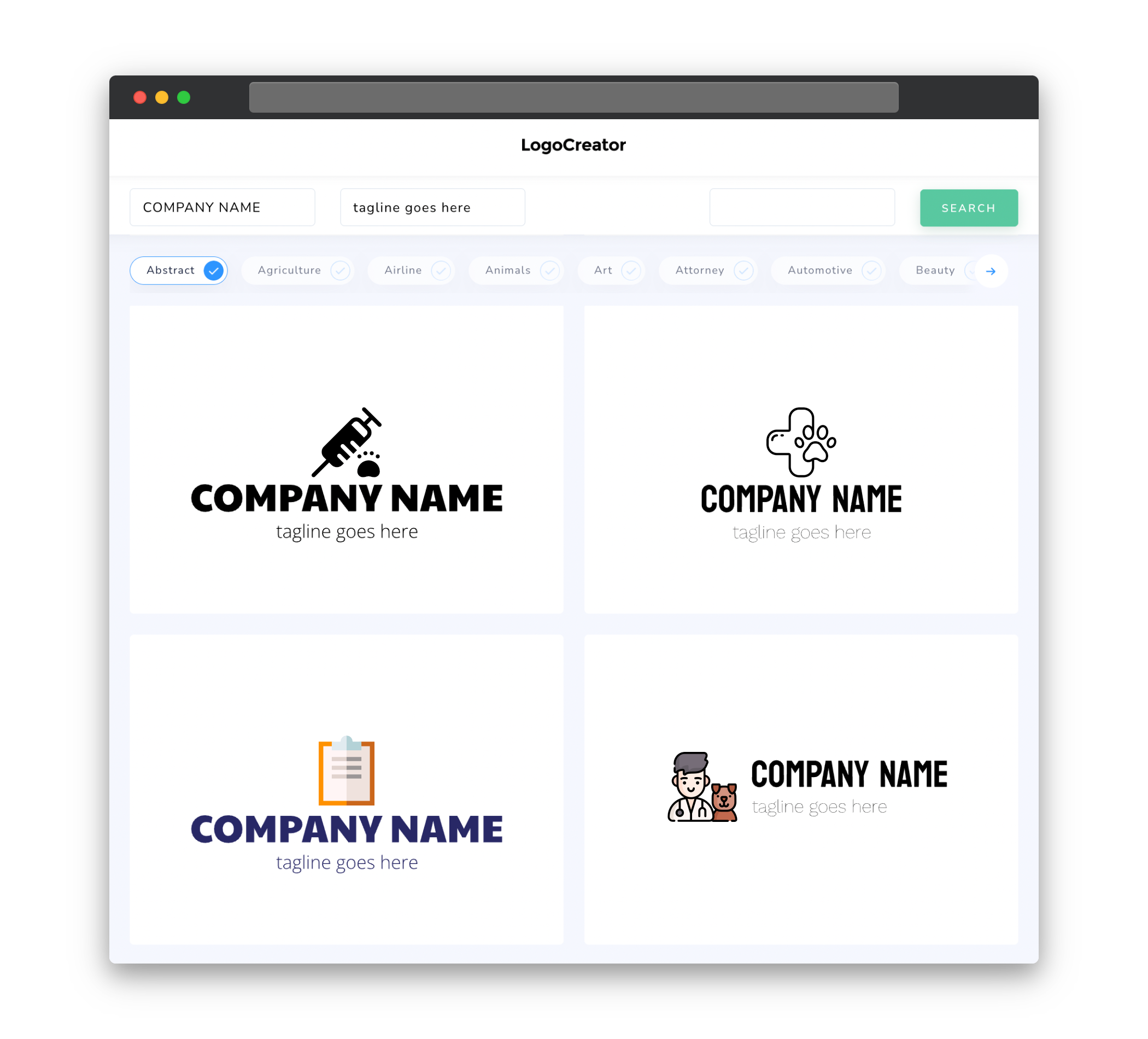Audience
When designing a logo for a veterinary clinic or animal hospital, it’s important to consider your target audience. As a veterinary logo maker, you’ll want to create a design that appeals to pet owners and animal lovers alike. Your audience may include people of all ages and backgrounds who care deeply about their furry friends. Some may be seeking a logo for their own veterinary practice, while others may be searching for a logo for a pet-related organization or business. Understanding your audience and their values will help you create a logo that resonates with them and establishes trust and credibility.
Icons
The use of icons in a veterinary logo can help convey the nature of your business and leave a lasting impression on your audience. When designing a veterinary logo, consider incorporating icons that represent animals such as cats, dogs, birds, or even more specific animals depending on your specialization, such as horses for equine veterinarians. Additionally, symbols that evoke feelings of care, compassion, and professionalism, such as a heart or a medical cross, can also be incorporated into your logo design. Icons can be used to create a visual shorthand that instantly communicates what your veterinary clinic or hospital is all about.
Color
Choosing the right colors for your veterinary logo is crucial as colors can evoke emotions and create a strong visual impact. When it comes to veterinary logos, it’s common to see colors that are calming, comforting, and associated with nature. Shades of blue and green are often popular choices as they symbolize trust, healing, and growth. Additionally, colors such as yellow and orange can be used to convey happiness, joy, and energy, which can be particularly effective when designing a pediatric veterinary logo. It’s important to choose colors that not only resonate with your audience but also reflect the values and atmosphere of your veterinary practice or organization.
Fonts
The choice of fonts in your veterinary logo plays a significant role in conveying the right message to your audience. Ideally, you’ll want to select fonts that are clear, easily readable, and reflect the personality and tone you want to convey. For a veterinary logo, Sans-serif fonts are commonly used as they are clean, modern, and give a sense of professionalism. Serif fonts, on the other hand, can provide a more traditional and trustworthy feel. Whichever font style you choose, ensure that it complements the overall design and maintains a good balance between professionalism and approachability.
Layout
The layout of your veterinary logo should be carefully planned to create a visually appealing and balanced design. Consider the various elements you want to include in your logo, such as icons, text, and other graphical elements, and arrange them in a way that is visually pleasing and easy to comprehend. It’s important to ensure that the layout looks cohesive whether it’s scaled down for a small printing application or blown up for a larger signage display. A well-structured and thoughtfully designed layout will help your veterinary logo make a memorable impact on your audience.
Usage
A veterinary logo has multiple applications, and it’s important to consider its usage across different mediums. Your logo should be versatile enough to work well on various platforms, including websites, social media profiles, business cards, signage, and other marketing materials. When designing your veterinary logo, consider how it will look in both color and black and white formats. Pay attention to the scalability of your logo, ensuring that it looks equally appealing when scaled down for smaller applications or blown up for larger ones like billboards. A well-designed veterinary logo should be adaptable and recognizable across all platforms, reinforcing your brand identity and promoting your veterinary clinic or hospital effectively.



